Character
Antonia Project Briefing
- Photo‑Realistic 3D Character Head
- Head Rigging and Face User Interface (UI)
- Organic Surface
- High Poly SubDivisions
- Render time
Draw expression sheet to anticipate mesh deformation needs during animation. Model and texture for organic surface at render time using high poly SubDivisions, displacement and normal maps.
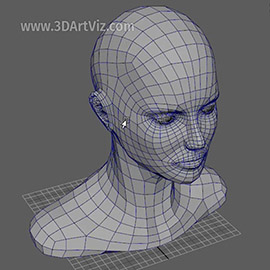
Model from scratch using the position of eyes and mouth as a reference. Begin with a basic Zsphere, apply detail and expand with Dynamesh to sculpt neck and shoulders. Refine details until getting a basic expression with half closed eyes (to texture eyelids) and half open mouth (to model mouth interior). Export a decimated sample to retopologize with vectors in Maya. Once retopologized, open UVW, import into ZBrush, give more subdivision levels, project details and sculpt even more detailed relief. Export normal and displacement maps from lowest subdivision level. Back in Maya, plug into head's shader and light the scene. Model character's clothes using the same technique.

Paint 4K textures based on normal and displacements for diffuse, speculars and subsurface scattering. Plug into shader and test with standard lighting (one HDRI dome and an area light). Use a light-emitting polygon to cast caustics on eye iris through the lens.
Rig and skin the Head using joints and prepare for linking to a face user interface (UI). Design UI for facial expressions to follow the positions of neck and head after animation and checking out the needs featured in the expressions sheet. Test against expressions sheet and actual acting situations, including clothes and environments.
Apply visual effects for hair using Xgen, must follow deformations but doesn't have to react to gravity or collide. Make extra simulations and bake for eyebrows, eyelashes, forehead contours and thin hair layer on the whole face.
Light the scenes using an HDRI dome. Render passes for compositing: ambient occlusion, diffuse, speculars, subsurface scattering, motion vector. Use a cardboard in post‑production to spare the depth of field render time.
Elf‑Woman Project Briefing
- Photo‑Realistic 3D Character Body
- Whole Body and Face Rigging
- Organic Surface High Poly SubDivisions
- Render time

Draw a storyboard with the whole scene to anticipate modeling, visual effects and animation needs. Draw elevations for the character using orthographic views to help the modeling process. Animate a turnaround of the character to test the model in perspective and paint concept art to anticipate modeling, shader, lighting and compositing conditions.
Model from the scratch beginning with a ZSphere and pull symmetrically for arms and legs. Once the general silhouette is solved, apply some detail. Send a decimated mesh to Maya in order to retopology using quad draws. Once retopologized, open UVW using four 4K UDIM spaces for face, arms, legs and torso. Import into Zbrush, subdivide, project previous relief, sculpt finer details and export ×4 normal + ×4 displacement maps.
Paint 4K diffuse, specular and subsurface scattering maps and plug into shaders with normal and displacement maps together.

Rig the mesh for animation: torso first, including parallel FK and IK, advanced twist, extendable joints. Rig arms later with FK/IK functionalities, also on the forearm separately, so that the character can fix the elbow on surfaces. Deform the forearm mesh using also advanced twist. Hand has its own set of automated deformations including its own reverse-foot mechanism. Leg is rigged like arm, without advanced twist, but rigging a complete reverse foot like ball and sides of the hand. Arms and legs include an automatic match script written in MEL.
Skin the mesh using Muscle simulation for limbs and neck and extra sliding and sticky deformers for elbows, fingers, knee and head. Skin the face using blendShapes, each one adjusted for the respective expression in expressions sheet. I sculpted the expressions in ZBrush for this particular situation because there is no user interface for the actual expressions.
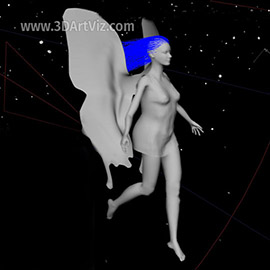
The visual effects for the environment include different types of nucleus particles, replacing them with actual textured geometry. Emit through a tunnel and collide and stick along the character's body. A low‑res version of her body acts as an attractor. Pampas grass and trees use Paint Effects, mist uses Fluid and nucleus particles and a regular spotlight emits volumetric lights. Flares add in at post‑production. The visual effects for her body include nucleus Hair and nucleus Cloth for the wings and dress. Original dress' design, thanks to Petra Gittel (Das rote Kleid).
The compositing phase includes following passes: direct and indirect light, diffuse, reflections and speculars, refractions, subsurface scattering, visual effects, volumetrics and depth of field. All passes rendered separating foreground and background to spare render resources. Post‑production program: Nuke.
Robots Project Briefing
- Photo‑Realistic 3D Mechanic Character
- Arm Rigging
- Mechanic Hard Surface
- High Poly SubDivisions
- render time
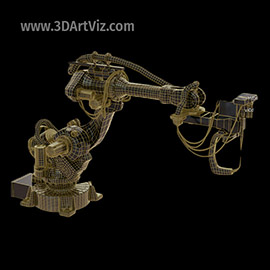
Paint a concept to check out modeling, lighting and visual effects needs. Draw a storyboard to time the animation and develop an animatic. Draw elevations and import them into Maya as orthographic views.
In this case, I didn't sculpt the parts of the robot and later retopologized them, but the opposite: Using the orthographic views, model the main parts without details in Maya, open UVW, export meshes (using obj), import them into ZBrush and sculpt details like relief, screws, patterns, scratches, etc. Export normal and displacement maps and plug them into a shader inside Maya.
Rig the robot like an arm including a switch for FK and IK. Draw controls with vectors. For the visual effects, use nucleus Cloth on the flexible tubes, Fluid for molten metal and smoke and nucleus Particles for the sparks.
Animate based on the animatic and render and composite using following passes: ambient occlusion, diffuse, speculars, reflections, motion vector and depth of field. Render and add separately some robots' reflections from visual effects to spare render time. Use Maya rendered 3D Flares and glows to keep track of camera movement.
Dancer Project Briefing
- Simulation 3D Character Clothes
- Models & MoCap: MPC
- Organic Surface
- High Poly SubDivisions
- Render time

Model for her body, dress and necklace as well as motion capture, provided by MPC. Test the models with different degrees of detail, skin the mesh to her body and apply nucleus Cloth on the skirts to follow deformations. Same thing with necklace: use a spline connected to nucleus Hair to hang it on her neck and collide with her body.
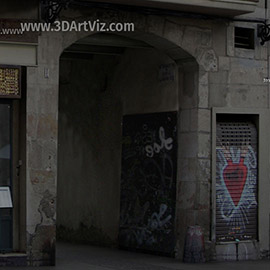

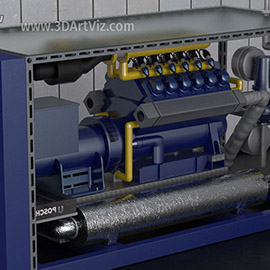







Social Media